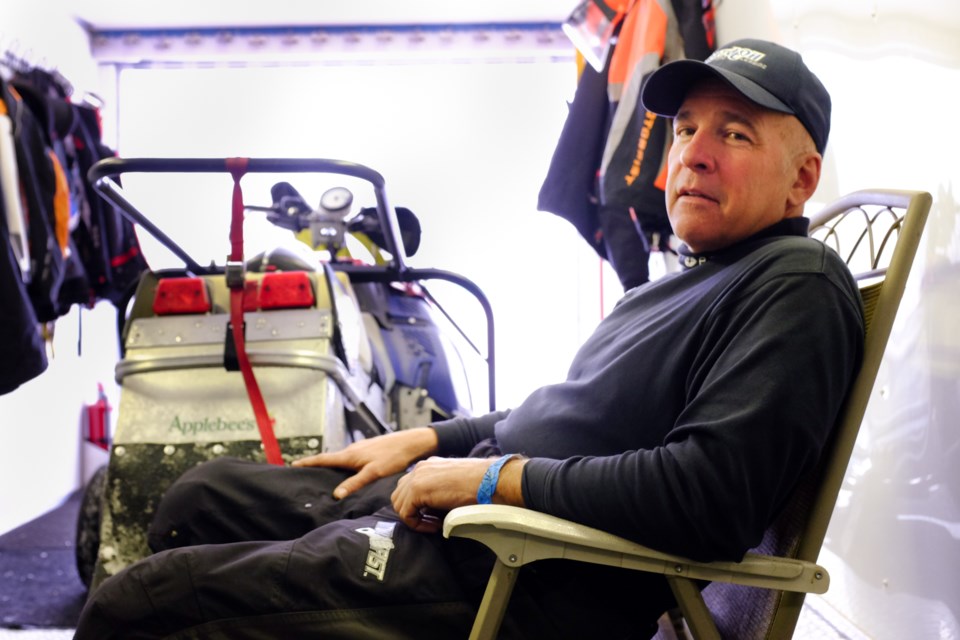After 38 years of professional snowmobile racing Karl Schwartz raced his last I-500 on Saturday in Sault Ste. Marie, Mi.
The Michigan Motorsports Hall of Fame inductee has raced 28 I-500s and won the world-class event 1984 as well as ranking high since then.
“We’ve had a lot of successes over the years and a lot of disappointments, like we had today,” said Schwartz. Schwartz raced for Team Applebee’s on Saturday but, while they were around eighth place on mile 169, the team’s snowmobile had a crankshaft failure the permanently knocked them out of the race.
Schwartz currently lives in Freeland, Mi but grew up not far from the I-500 in Rudyard, Mi, where he started riding snowmobiles at 8-years old.
“I just grew up here down the road and all we knew about as kids was snowmobiles. I had a passion for them then and still do. In Rudyard it was just kind of what we did. There was only hockey in the Sault so I wasn’t exposed to that,” said Schwartz.
Schwartz said he has “been in every aspect of snowmobiling over the years” from racing, to owning a dealership, and to working on organizing committees. He said his career highlights include the I-500 win, winning the Triple Crown in 1982, as well as “13 class championships”.
Schwartz talked about what makes professional snowmobile racing different.
“One thing that makes our sport interesting is the tracks. I think a lot of people don’t know we start on an ice track, not snow. We get traction with carbide runners, which are like an ice skate blade, to turn. Every time a snowmobile goes over the track the machine actually consumes the racing surface so, unlike auto racing, ours are not consistent,” he said.
At the end of a race, holes and bumps can be three or four feet deep.
Schwartz said losing control when hitting a bump or hitting another machine are the two main dangers in the sport.
“It’s absolutely a high risk sport, “he said. Schwartz said the physical demand on drivers means they need to by physically fit, often physically training to improve handgrip muscles and quadriceps.
“Most importantly you need to have innate feel for the machine. Most of the time you are feeling the bumps, feeling the track, sometimes with the way the visibility is you cant see the track and you can only feel it underneath you. You need to be very perceptive that way,” said Schwartz.
It’s absolutely a high-risk sport because of the speeds we go. It’s bumpy and rough out there.
The sled can become unsettled when you come into these big rolling bumps.
Schwartz said the sport isn’t cheap.
A typical competition level snowmobile costs around $15,000-$20,000 (U.S. dollars) and running just a single event like the I-500, with fees , fuel, and other part costs, runs around $3000.
In total Schwartz said he spends about $25,000-$30,000 a year on snowmobile racing.
“This is where I waste all of my money,“ he said. Schwartz said his main reasons for retiring is so that he can get out while his health is still good and devote more time to his business providing fuel and lubricants to the pipeline industry.
Schwartz said that he will be eligible for entry into the Snowmobile Hall of Fame five years after his retirement.
